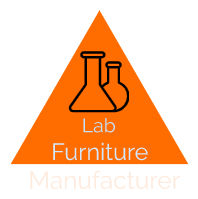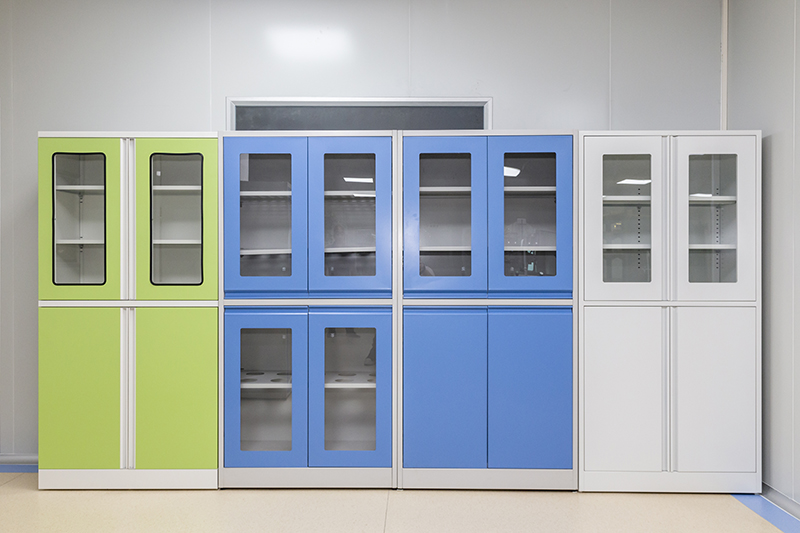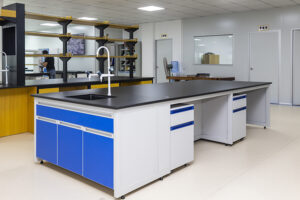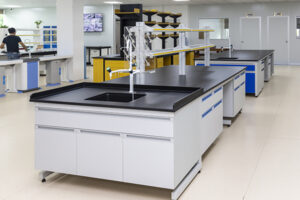Many pro labber in the laboratory focus on their own experimental process but ignore the storage of reagents, which will cause safety issues. Most of the chemicals must store in the safety storage cabinet. Today, let’s look at how we can store the reagents.
Chemical laboratories generally need to use various chemical reagents. In addition to daily use, they also need to store a certain amount of chemical reagents. Most chemical reagents have toxicity, and some are flammable and explosive dangerous goods. Therefore, it is crucial to understand general chemicals’ nature and storage methods. Larger quantities of chemicals should be placed in the sample storage room, stored in the lab safety storage cabinet, and kept by special personnel. Dangerous goods should be stored following the management regulations of the national security department.
The first thing to remember: store in isolation!
Flammable, highly toxic, highly corrosive, low-temperature storage, etc. are classified and stored; laboratory and warehouse management personnel must have specific relevant knowledge. Store in a ventilated, cool medicine storage cabinet with a temperature below 30°C. Some medicines are easily decomposed when exposed to light and should be stored in the dark. Solid and liquid; acid and alkali are placed separately.
1. General requirements for the storage of reagents
①The laboratory should try not to store fewer chemical reagents, which can not only keep the contamination of the laboratory by the volatiles of the reagents but also avoid the chemical reaction of the substances produced by the chemical experiment on the chemical reagents. If have more space, there should be room or a safety storage cabinet to store chemical reagents;
②Maintain a specific temperature and humidity indoors. To avoid substantial light exposure, there must be good exhaust equipment;
③Chemical reagents should be placed in a unique glassware storage cabinet that can prevent dust and various vapors or gases from contamination and erosion. It should be classified and stored according to the nature of the reagents;
④ For the stored reagents, always check whether the label on the bottle is in good condition and whether the handwriting is clear. If it falls off or is blurred, it should be replaced in time;
⑤ Fire extinguishers and sandboxes should be prepared indoors.
2. Storage requirements and precautions for various special reagents
(1) Substances that are easy to interact with components in the air:
① Substances that are easy to interact with oxygen:
Elements of active metals such as sodium, potassium, calcium, etc., need to be isolated from the air and are generally stored in kerosene or paraffin. Lithium should be stored in paraffin oil.
White phosphorus should be kept in water. Iron powder, ferrous salts, stannous salts, sulfurous acid and its salts, hydrosulfuric acid and its salts, sodium thiosulfate, phenol, etc., should be kept in airtight areas.
② Substances that are easy to interact with water:
Sodium, potassium, and calcium should be kept in kerosene. Calcium carbide, quicklime, anhydrous copper sulfate, sodium oxide, sodium peroxide, magnesium nitride, aluminum sulfide, and other substances can react with water and should be sealed and stored. Concentrated sulfuric acid, solid sodium hydroxide, calcium chloride, magnesium chloride, tin tetrachloride, phosphorus pentoxide, soda lime, silica gel, concentrated phosphoric acid, and other substances are easy to absorb water or deliquescence and should be sealed and stored.
③ Substances that are easy to interact with carbon dioxide:
Alkali substances (such as sodium hydroxide, calcium hydroxide, etc.), weak acid salts (such as sodium silicate, bleaching powder, etc.), sodium peroxide, soda lime, and other substances should be sealed and stored.
(2) Substances that are easily decomposed:
Concentrated nitric acid, silver nitrate, silver bromide, silver iodide, chlorine water, bromine water, potassium permanganate, hydrogen peroxide, and other substances easily decomposed by light should be stored in a brown bottle and placed in a dark place. Silver bromide and silver iodide should be sealed and stored in a dark room.
(3) Volatile substances:
Concentrated hydrochloric acid, concentrated nitric acid, concentrated ammonia water, all organic solvents and other substances should be sealed and placed in a low temperature place. Liquid bromine is toxic and volatile. It needs to be stored in a fine-mouthed bottle, sealed with water, then plugged with a glass stopper, sealed with wax, and placed in a cool place.
(4) Substances that are easy to sublime:
Naphthalene, anthracene, iodine, and other substances are accessible to the sublime, so they should be sealed and stored in a low-temperature place.
(5) Substances that are easy to interact with glass:
Sodium hydroxide, potassium hydroxide, etc., are easy to interact with the silica in the ground glass and can stick to the glass stopper, so they should be stored in a container with a rubber stopper. Water glass has a solid sticking effect on glass, so it cannot be stored in a container with a glass stopper. Because of its strong corrosiveness, hydrofluoric acid can react with the silica in the glass. Therefore, it cannot be stored in glass bottles but should be stored in plastic bottles.
(6) Flammable substances:
① Flammable liquid:
Organic solvents, such as ethanol, ether, acetone, carbon disulfide, benzene, toluene, gasoline, etc., are easily volatilized into gas, which burns when exposed to an open flame. Therefore, these liquids should be sealed and stored separately, and attention should be paid to cool, ventilated, and away from fire sources.
② Flammable solids:
Sulfur, red phosphorus, magnesium powder, aluminum powder, and other substances have shallow ignition points, and the storage place should be ventilated and dry. A flammable safety storage cabinet is a wise choice for these chemical storage.
(7) Substances that are likely to cause poisoning:
Cyanide, arsenic trioxide or other arsenic compounds, mercuric dichloride, etc., are all highly toxic reagents. A tiny amount of intrusion into the digestive tract may cause poisoning and death; soluble copper salts, barium salts, lead salts, and antimony salts can also cause poisoning. Therefore, these reagents should be stored appropriately. A particular person should keep the highly toxic substances.
(8) Explosive substances:
① Substances that burn and explode in contact with water:
Sodium, potassium, calcium, calcium carbide, zinc powder, etc., can react violently with water and release flammable gas, which can easily cause an explosion. Therefore, these substances should be isolated from volatile substances, strong oxidants, etc., and sealed when stored.
② Substances that cause an explosion due to strong redox reaction:
Peroxides (e.g., hydrogen peroxide, sodium peroxide, barium peroxide), strongly oxidizing oxyacids (e.g., perchloric acid), and their strongly oxidizing salts (e.g., nitrate, chlorate, dichromate) Strong oxidizing substances such as acid salts, permanganate) may cause explosions when heated, impacted, or mixed with reducing imports. Therefore, it must not be stored together with combustibles, inflammable and reducing imports, and should be stored in a cool and ventilated place.
If you are not clear about which kind of lab safety storage cabinet should be chosen to store these chemicals, you can contact our professional team.




